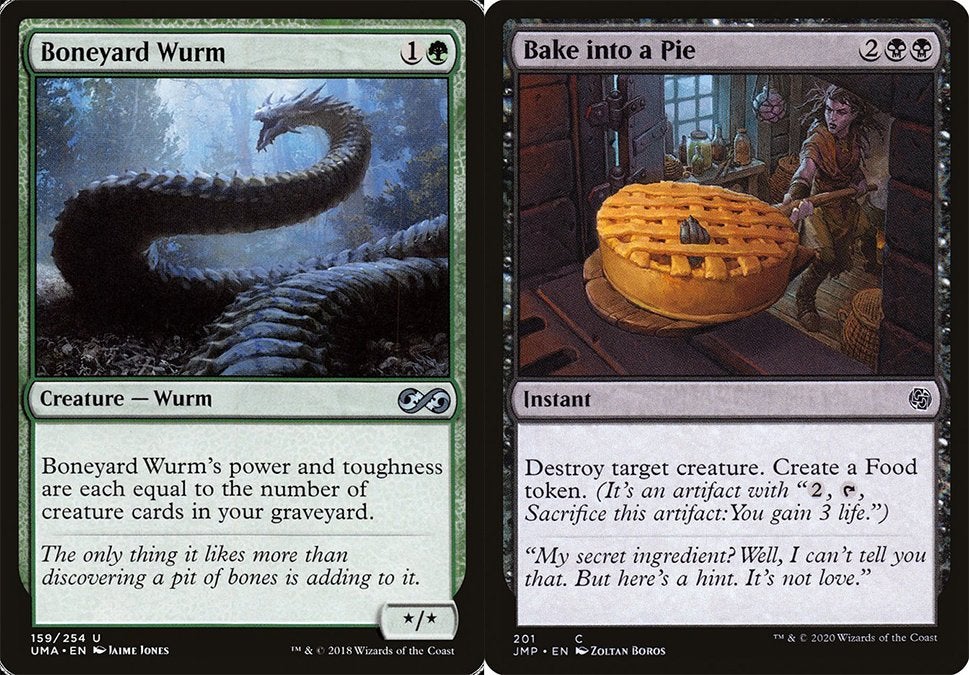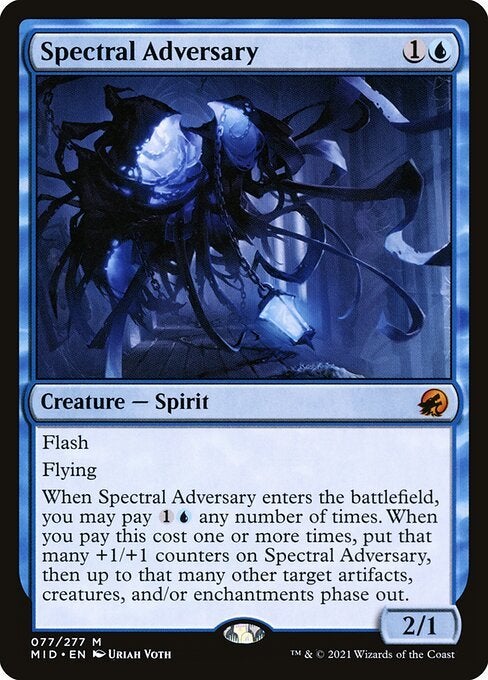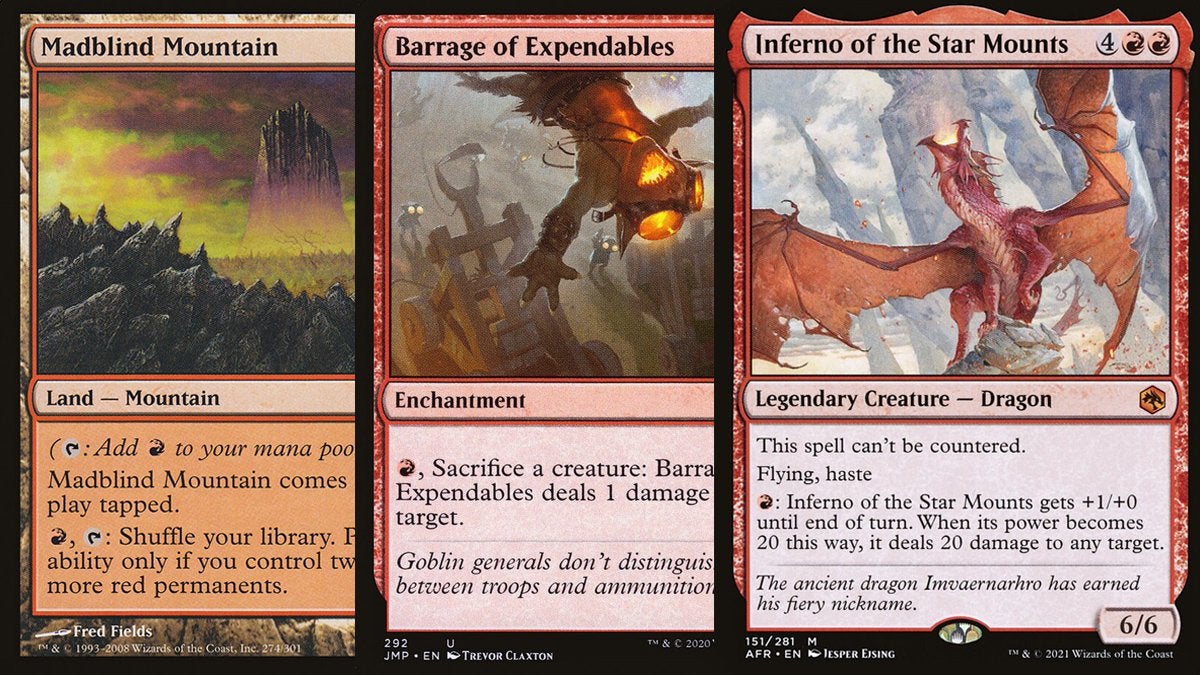![]() Key Takeaway
Key Takeaway
In Magic: The Gathering, the following card types are Permanents:
- Artifacts
- Battles
- Creatures
- Enchantments
- Lands
- Planeswalkers
And here are the card types that are Non-permanents:
- Sorceries
- Instants
Permanents in Magic: The Gathering are—for the most part—cards that remain on the battlefield after they have been cast by their owner. To determine which cards are Permanents, you need to wrap your head around how the rules classify each card type.
Table Of Contents
What Is a Permanent?
Artifacts, Battles, Creatures, Enchantments, Lands, and Planeswalkers are all card types that are classified as Permanents in Magic: The Gathering.
What decides this is MTG‘s ruling of what types of cards stay on the battlefield. The above-mentioned card types are those that stay on the battlefield indefinitely (except in the cases where they get affected by effects and abilities). Additionally, cards can only be Permanents while they are on the battlefield. If a card of one of the previously-mentioned types is in your hand, deck, graveyard, or is in the exile zone, it is a Permanent Spell.
When a Card Becomes a Permanent (Permanent Versus Permanent Spell)
All cards in your hand, deck, graveyard, and exile zone are Spells: Permanent Spells and Non-permanent Spells. From the above-mentioned types, a card goes from being a Permanent Spell to being a Permanent when it enters the battlefield from any other zone (the hand, deck, graveyard, and exile zones). When played from your hand, this happens after casting a card resolves.
Sometimes, upon being cast, a Permanent gets destroyed due to the effect of an opponent’s Spell—such as an instant that has a “destroy” effect. When this occurs, the Permanent that was cast goes through a few specific steps. We’ll illustrate such a situation with the creature Boneyard Wurm and the instant Bake into a Pie.

Mmm, delicious Boneyard Wurm pie…
- Boneyard Wurm is in your hand (it’s a Permanent Spell)
- You cast Boneyard Wurm (the act of it getting cast is resolving)
- Your Boneyard Wurm enters the battlefield (it becomes a Permanent)
- Your opponent casts Bake into a Pie (Boneyard Wurm is still a Permanent)
- Boneyard Wurm is sent to the graveyard (it’s no longer a Permanent and returns to being a Permanent Spell)
What About Tokens?
Tokens of the above-listed types are Permanents when on the battlefield. This includes creature tokens and artifact tokens—the two most common token types.
On a related note, if you see the term “Nontoken Permanent,” this refers to the listed card types above. You can read this as “Permanent” if there are no tokens in play to make circumstances confusing.
What About Tapping, Flipping, Facing, and Phasing?
Tapping, Flipping, Facing, and Phasing are the only four ways you can alter a Permanent’s physical state. However, alternating a Permanent’s physical state never stops it from being a Permanent. Permanents are the only kind of card that can have statuses; Spells cannot.
Regardless of what’s happening to Permanent, it always remains a Permanent while technically on the battlefield. For tapped/untapped, flipped/unflipped, and face up/face down Permanents, this makes sense.
Phasing is a bit more convoluted. By definition, when a Permanent phases out, it temporarily doesn’t exist. Don’t confuse this for being exiled. A Permanent that phases out does not leave the battlefield…it just briefly leaves existence.

“I think, therefore I am…a spooky ghost.”
What Is a Non-Permanent?
Sorceries, instants, and players are Non-permanents in Magic: The Gathering. Despite sorceries and instants being played amongst Permanents, they don’t technically ever enter the battlefield (like players). Even when the effects of a sorcery or instant are resolving, they don’t enter the battlefield in the same way as Permanents.
Confusingly, this has led to sorceries and instants being referred to as Spells (also known as Non-permanent Spells). For example, if you have two creatures, two enchantments, and two instants in your hand, the creatures and enchantments are Permanent Spells while the instants are Non-permanent Spells (or simply “Spells” for short). However, the creatures and enchantments can become Permanents when cast—whereas the instants do not.
We hope this helped clear up any confusion you had about what is and isn’t a Permanent in Magic: The Gathering. The overlapped usage of the term “Spell” certainly doesn’t help to clarify things, does it? Feel free to bookmark this article and refer to it later if you forget what’s what—we wouldn’t blame you, as this is a pretty complex topic! While you’re here, feel free to check out our other MTG articles, like our piece about the rarest cards in the world.


